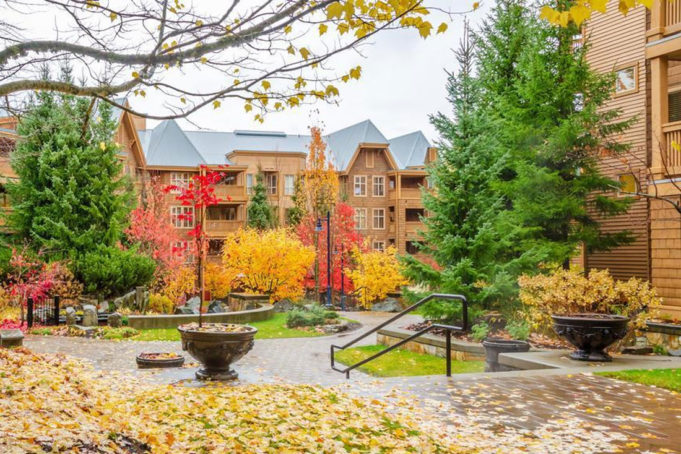A home doesn’t stop at the front door. The most livable spaces in Fort Worth are the ones that balance interiors with what’s happening outside, whether that’s a shady backyard dotted with oaks or a front porch catching the evening breeze. Interior design isn’t just about walls, paint colors, or the latest decor—it’s about creating continuity. When your rooms and outdoor areas feel like they’re part of the same story, the whole place becomes easier to live in. The eye relaxes, the flow improves, and the atmosphere feels intentional without being forced. That balance is what separates a house that feels temporary from a home that feels like it’s meant to last.
Light, Space, And Flow
Start with the way light moves. If the Texas sun pours through your windows all afternoon, you don’t want heavy fabrics that trap the brightness. Thin linen curtains or natural woven shades can filter and soften without blocking what you need most. Think about how those windows connect to the outside too. If you’ve got a line of sight to a row of crape myrtles or a bed of rosemary, play off the color palette you see outdoors. That connection between interior and exterior cues makes rooms feel anchored. The more your eyes can follow a consistent rhythm between indoors and out, the more natural your space will feel.
Inside, flow matters. Open-concept layouts make sense in modern builds, but even older homes can benefit from thoughtful furniture placement that doesn’t fight the architecture. Pay attention to traffic paths, not just where you can shove a sofa. And when you do set up a seating area, let the outside guide you—placing chairs where you can catch a breeze through the screen door is as much a design decision as it is a comfort one.
Beyond The Living Room Walls
Fort Worth homes often come with sizable yards, and those yards should have as much thought put into them as any dining room or hallway. A trimmed lawn and balanced plantings frame the house and reinforce what’s happening inside. Professional help here can make a surprising difference because hiring an arborist in Fort Worth isn’t just about trees. It’s about shrub and lawn care, deer deterrent, and even help with holiday decorations. When the landscape looks cared for, it changes how the indoors feel too. A bare patch of grass or a messy hedge has a way of dragging down the energy, while a cohesive yard design lifts it. Even something as simple as adding planters that echo the color scheme inside the house can tie everything together.
Decks, patios, and porches shouldn’t be treated as an afterthought either. If you’ve invested in polished hardwood floors or a neutral palette indoors, pick outdoor furniture that complements rather than competes. That doesn’t mean buying a matching set from a catalog—it means letting materials and tones echo each other. A teak bench outside can mirror oak accents inside. Terracotta pots can play off earthy wall colors. This kind of mirroring makes stepping outside feel like a natural extension of being indoors.
Function Over Fuss
Design often gets wrapped up in surface beauty, but function should lead. A well-designed kitchen isn’t just one that photographs well; it’s one where your appliances, counters, and cabinets serve how you actually cook. That thinking applies outside too. A backyard needs to work for barbecues in July and quiet mornings in March. The same goes for furniture choices inside. Sofas should support how your family lives—whether that’s movie marathons, pets sprawled out, or cocktail parties. When the yard layout works with your household’s habits, you avoid creating a gap between indoor life and outdoor possibilities.
Smart design also considers how seasons shift. Summers in North Texas are hot, which makes shaded porches and breathable fabrics inside non-negotiable. Winters might be milder, but fireplaces inside and fire pits outside extend use of both spaces. Designing for these seasonal shifts ensures your house works twelve months out of the year rather than just on paper.
Technology As A Quiet Partner
We’re past the point where technology feels like an intrusion in design—it’s become an invisible but essential layer. The right IT infrastructure at home makes it easier to work remotely, run security systems, and connect smart devices without cluttering rooms with tangled cords or routers perched on shelves. Good design can hide this backbone while letting it function seamlessly. For example, routing cabling through walls or using built-in storage prevents your tech from becoming visual noise. The same concept applies outdoors too. Landscape lighting, automated sprinklers, and even discreetly placed speakers should support the atmosphere rather than dominate it. Done right, technology blends in, keeping focus on the environment you’ve built.
Personal Touch Over Perfect Trends
Interior design trends can inspire, but they can’t dictate. The homes that feel alive are the ones layered with personality—quilts inherited from family, local art picked up at a gallery walk, or even a handmade bench tucked under a tree. Incorporating these elements matters more than nailing the current look on Instagram. Fort Worth has its own style legacy, and nodding to that with details—like wrought-iron accents, stone features, or rustic woods—grounds your home in place. Outdoors, a simple swing or cluster of lanterns can feel just as intentional as an interior rug or light fixture. Don’t design for strangers scrolling online; design for the people who actually live there.
The beauty of this approach is that it doesn’t date. Personality-driven choices hold up over time, while trends pass quickly. The more honest your choices, the more your house feels like an extension of yourself rather than an impersonation of someone else’s idea of style.
The Balance That Lasts
A home becomes timeless when the inside and outside are treated as equals. That balance doesn’t require wealth or endless hours—it requires attention, consistency, and a willingness to let both parts of your property speak to each other. Light, flow, and function matter indoors; maintenance, cohesion, and usability matter outdoors. When they align, you get something rare: a home that feels whole. And that kind of design never goes out of style.












